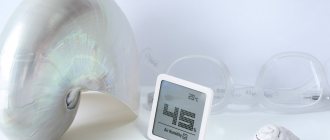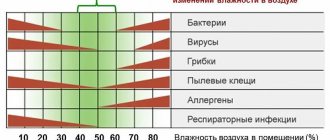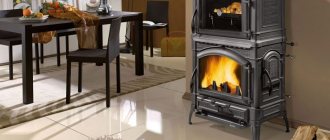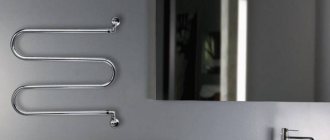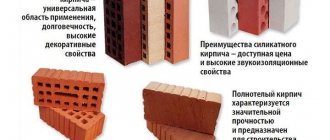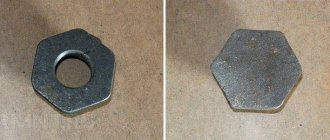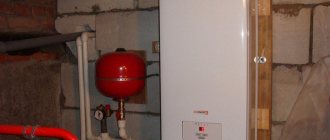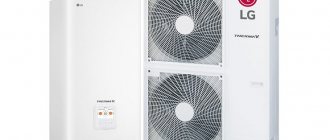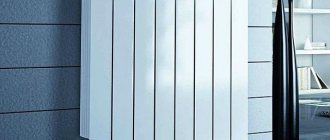Environmental parameters often change, depending on external factors (air temperature, weather conditions). The microclimate in the room immediately becomes different. This is felt more strongly if there are errors in the operation of the heating system, the air circulation in the house is disrupted, or micro-cracks appear in the window units.
This effect is enhanced when flowers are regularly watered, laundry is dried in the room, etc. To influence air humidity, you need to understand how much it changes. To do this, measure this parameter using a hygrometer.
What is air humidity
The name of the parameter encrypts its value.
Humidity is an indicator that determines the water content in different environments.
If you need to find out how much moisture there may be in the air, you should focus on the normal variant - values in the range of 30-60%. But this value is constantly changing.
Values entered:
- absolute;
- relative.
In the first case, the water content in the air with a volume of 1 m3 is determined. This indicator is also called the density of water vapor in the air.
The second option is the ratio of the mass fraction of steam to the maximum for given parameters. Units - %.
Instruments for measuring air humidity
Use a hygrometer. Its main function is to determine the moisture content in the air.
There are several types:
- hairline;
- film;
- conductometric;
- weight and condensation;
- ceramic;
- psychometric;
- electronic.
Devices are distinguished by their mechanism of action and efficiency.
The electronic type of the device allows you to get results quickly. Mechanical analogues are reliable, but will require more time for measurements.
Hair hygrometer
The device is designed to determine changes in moisture content within the range of 30-80%. Hair (hair) hygrometer is a mechanical type device. It is designed quite simply.
Structural elements: a metal frame, human hair, on which a small weight is attached, and also a pulley, an arrow, and a scale with divisions. The operating principle of the device is based on changes in hair length under the influence of environmental parameters.
Film hygrometer
The device can withstand more significant mechanical loads than its hair counterpart. The design includes an organic film. The device measures air humidity according to a similar principle to the previously discussed option: the arrow moves when the size of the membrane increases/decreases.
Weight and condensation hygrometers
The principle of operation is based on increasing the weight of the substance that absorbs moisture. The device measures the absolute humidity in a room. The design provides several connected tubes filled with calcium chloride.
Such a hygrometer determines the change in indoor air humidity by determining the difference between the weight before and after the hygroscopic substance absorbs moisture from the environment. In this case, the most accurate result is obtained.
Condensation hygrometer is a device for measuring relative air humidity. For this purpose, the principle of determining the temperature difference is used. The mechanism of action of the hygrometer: under the influence of a beam of light that falls on a special mirror, condensation appears or ice crystals form. Relative humidity is determined by the difference in temperature before and after condensation occurs.
Psychrometric hygrometer
The operating principle of the device is also based on measuring the ambient temperature. Only the design of the psychometric hygrometer provides for 2 thermometers (dry, wet), and not 1, as in the previously discussed device.
As moisture evaporates, environmental parameters change. Air humidity is determined using data: determining the rate of condensate evaporation, the temperature difference between two thermometers.
Ceramic hygrometer
During operation of the device, the electrical resistance of a mass of ceramic material and metal particles is measured. Materials used: kaolin, clay, silicon. The device works best if the mass includes metal oxides.
Electronic hygrometer (digital)
When choosing a way to measure the humidity in a room as accurately as possible, you should consider the electronic version of the device. The principle of its operation is based on changing the resistance of lithium chloride, which covers the plate inside the hygrometer. A built-in thermometer is provided for increased accuracy.
The Tale of a Little Wizard and a Magic Bucket
The concept of air humidity is easy to explain with the help of a fairy tale.
In a certain kingdom there lived a little wizard. His name was Air. And he had a magic bucket.
The magic was that the size of the bucket depended on the temperature. The higher the temperature, the larger the bucket became, increasing in size.
Note: In this analogy, absolute humidity is the amount of water poured into the bucket. And relative humidity is the proportion that the poured water occupies in relation to the entire volume of the bucket.
Suppose that at a certain temperature the volume of the bucket is 10 liters. Pour 5 liters of water into a bucket. This is half a bucket, that is, the relative humidity will be 50%. Since 5/10 = 0.50 = 50%
We do not change the amount of water poured, which means that the mass and volume of water does not change.
Let's say the temperature has increased. The size of the bucket will increase with increasing temperature. Let's assume that the bucket has grown so much that its volume is now 15 liters.
This means that now the relative humidity will be equal to
5/15 = 0,33 = 33%
Rice. 8. As temperature increases, relative humidity decreases
If absolute humidity does not change when temperature rises, relative humidity decreases.
Let us now assume that the temperature has dropped. This means that the volume (size) of the bucket will decrease. If, for example, the volume of the bucket decreases to 8 liters, then the relative humidity will be
5/8 = 0,625 = 62,5%
That is, absolute humidity has not changed, but relative humidity has increased.
Rice. 9. As temperature decreases, relative humidity increases
If absolute humidity does not change when the temperature falls, relative humidity rises.
As the temperature drops further, the volume of the bucket will continue to decrease. At a certain temperature, it may happen that the volume of the reduced bucket coincides with the volume of water poured.
Suppose the volume of the bucket decreases to 5 liters. And the amount of water in the bucket is also 5 liters. The relative humidity will be 100%.
5/5 = 1,0 = 100%
The temperature at which the size of the bucket matches the amount of water poured is called the dew point.
Rice. 10. By reducing the temperature of humid air we can achieve steam saturation and dew point. Relative humidity at this temperature will be 100%
If the temperature continues to drop, the magic bucket will continue to shrink. Excess water will spill out. We say in such cases: “precipitation is falling,” or “it is raining.”
Note: Relative humidity cannot exceed 100%. When relative humidity is 100%, excess water vapor from the air condenses, resulting in precipitation - rain or dew.
Alternative measurement methods
To determine changes in air parameters, improvised means are used. They do not provide accurate data. However, if there is a suspicion that the air humidity does not meet the standards, there will be reasons to purchase a special device.
Alternative methods:
- Glass of water. It is cooled (to +5°C), then left in the room. If condensation appears and flows onto the table, high air humidity is suspected. When the walls dry out quickly, the humidity is considered too low.
- Tabular method based on temperature difference. A mercury thermometer is used. To obtain the necessary data, it is recommended to measure the air temperature in normal conditions and in a humid environment (the thermometer is wrapped in a damp towel).
Harvia SAC92200
Harvia SAC92200
Country of origin: Finland. The body of the model is made of wood in eco-style. It has the shape of a rounded square, into which a clear dial is inserted, the measurement step of which is 10 units. The body material is birch. The model has a hair operating principle. Measuring range: pressure from 0 to 100%, temperature - from -15 to +55C° .
Advantages:
- nice design;
- low cost;
- high accuracy;
- ease of operation.
Main disadvantage:
- long period of response to changes in air humidity.
How to choose an air humidity meter
There are a number of parameters that you pay attention to before purchasing:
- hygrometer type;
- accuracy (the best option is an electronic device);
- device capabilities: take into account the range of measured humidity values;
- operating conditions (pay attention to the permissible air temperature);
- the ability to move the device from place to place.
Modern models of electronic devices perform different tasks, for example, they are also used as an alarm clock, barometer, some of them have a Wi-Fi function.
type of instalation
The most common design for home use is the desktop type. Typically, compact devices that do not take up much space on a table or shelf are purchased for home use.
Wall-mounted versions of humidity measuring instruments are widely used. Often made in the form of an ornament, they are placed on the wall of the room. They usually have a flat shape. In addition to home use, they are used to collect data (temperature and humidity) in warehouses. These professional devices are called recorders.
Now there is a hygrometer for every taste.
Portable models are available for use in the field. The portable version is very compact and fits in your pocket, usually with a digital display.
Laboratories use stationary equipment that can weigh up to 50 kg. An example is a coulometric hygrometer. It is designed to measure the absolute humidity of gases.
Often several measuring instruments are combined in one housing. For example, a thermometer for measuring air temperature and a hygrometer. Such a device is called a hydrograph and is often used for household needs in home incubators and greenhouses.
Portable versions of the devices can be seen on the retractable probe. A gyrograph is needed to measure humidity in hard-to-reach places.
Humidity range and heating threshold
According to GOST, the norm in winter is considered to be relative humidity of 30-45%, and in summer – from 30 to 60%. When choosing a hygrometer for indoor use, consider the range of values:
- 20-80% in the bedroom;
- bathroom – 100%, because the indicators here are constantly increasing;
- balcony, pantry, kitchen - from 10 to 90%; in these rooms the humidity also often increases.
The hygrometer can be used when the air temperature rises to +120°C, which allows it to be used in a sauna or bathhouse.
TFA 45.2033
TFA 45.2033
Country of origin: Germany. The mechanical type hygrometer is made in the shape of a circle. The case has a brass ring and an informative dial, which is divided into comfort zones. Measuring range: humidity from 0 to 100%, temperature from -15 to +55C°. The device has a wall mount.
Advantages:
- low cost;
- ease of operation;
- wall mounting option.
Main disadvantage:
- When direct sunlight hits the device, it gives readings with a large error.
How to maintain relative humidity in your home
Indoor environmental conditions are constantly changing. If at a given moment in time there is a need to influence the humidity, and it is not possible to wait for the value to change naturally, it is recommended to resort to improvised methods.
If the humidity is low
Effective methods:
- ventilation, which normalizes the circulation of air flows;
- wet cleaning;
- There are several containers of water around the apartment.
A humidifier, air conditioner, and thermostat are used in the room.
If the humidity is high
Eliminate any sources of moisture:
- clothes to dry are hung on the balcony, not in the room;
- adjust the windows to increase the flow of air flow;
- include compact heaters;
- Air dehumidifiers are used.
The first signs of microclimate change
You can notice an increase or decrease in indoor air humidity based on a number of signs. If the indicator is increased:
- laundry takes a long time to dry;
- Condensation appears on the windows;
- black fungus appears on surfaces.
If the moisture content is reduced (less than 30%), you can notice this due to the following signs:
- family members develop a dry cough, and only at home;
- the skin and mucous membranes are dry;
- nosebleeds often occur;
- itching increases due to a constant feeling of dryness;
- the skin is peeling.
conclusions
When signs of changes in relative humidity become noticeable, you should try to normalize the values of this parameter. If laundry takes a long time to dry, condensation appears on the windows, or family members cough, then it is first recommended to measure the air humidity in the room.
Hygrometers are used for this. They are presented in different types: electric, ceramic, mechanical, etc.
In order to increase/decrease the moisture content in the air, they resort to improvised means or connect special equipment (humidifiers, dehumidifiers, air conditioning).
